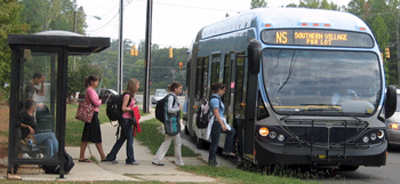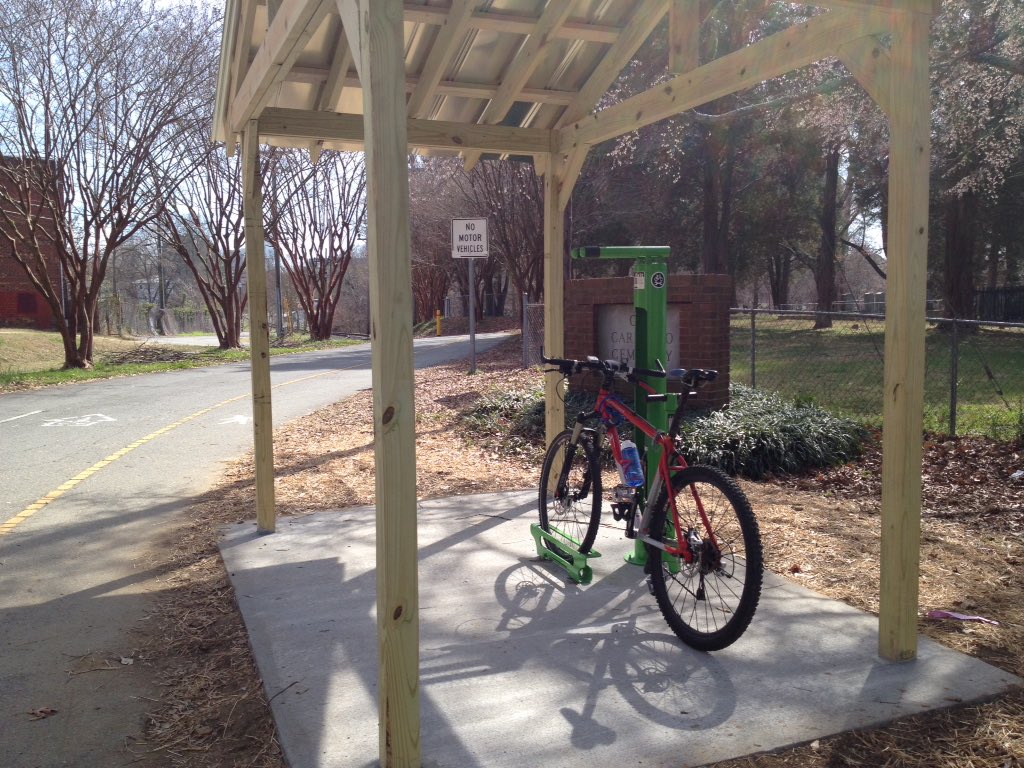The Tuesday, May 23rd, 2017 Carrboro Board of Alderpersons meeting was live tweeted. Below is the storify of all related tweets.
Spoilers:
1. Alderperson Michelle Johnson got a great send off complete with a proclamation, her very own street sign, star sunglasses, and tiaras.
2. The CBOA and town staff will continue to talk about MLK Park and the installation of one or two bike pump tracks.
3. IFC's rezoning permit for FoodFirst was unanimously approved!
The May 2017 column in the Chapel Hill News by Matt Bailey and OrangePolitics Editors Jason Baker and Molly De Marco explores how transit-oriented development can address the affordable housing crisis in our community. What are your thoughts? Read the column below:

Three of the biggest challenges facing Chapel Hill are providing affordable housing for people of modest incomes, bringing back tax-paying private-sector employers, and reducing the high cost of providing local government services that has resulted from policies encouraging suburban sprawl.
Transit-oriented development is a proven way to address all three of these challenges.
Our Carrboro and Chapel Hill communities have made a number of efforts lately to improve connectivity in their downtowns and improve the walking and cycling experience for residents. Carrboro is already recognized by the League of American Bicyclists as a Bicycle Friendly Community, the only silver-level awardee in North Carolina. Chapel Hill is a bronze-level awardee. But there's always more to be done, to enhance the safety and convenience of getting around by bike and on foot. Several new improvements have recently been completed or are in the works. Our university is getting into the act too.
Bike Fixit Stations. At Wilson Park in Carrboro, the Town installed the first of three bike repair stations, followed in short order by the other two at the Libba Cotten Bikeway and at Town Hall. The tools and pumps at the stations are protected by simple shelters so that riders can make minor repairs or just fill their tires without exposure to rain or hot sun.

The Morgan creek trail has been in place and heavily used by residents of Chapel Hill for some time. The paths popularity is in spite of being isolated and lacking any connectivity at the ends. Most people, wanting to enjoy this fine path must drive on a highway, and then park their cars in a lot that is often overflowing on weekends. Families, living only a couple hundred yards away on either end, have no safe way to reach the greenway other than to drive there in a car.
Town counter data backs up how popular this trail really is. A counter, installed on the path last year, recorded an average of 307 trips per day on the trail over the last 329 days. A total of 101,297 trips in all. Most users of the trail pass the counter twice as they head in and out from the lot, so that is over 50 thousand trips in less than a year.
When I have run past the lot for this trail, and seen bikes loaded up on cars, I wondered why the town cannot make it fully accessible to the thousands that use it. My feelings were this situation is a failure in urban planning to have a recreational facility that requires a majority of the people to drive there to access *
With the rollout of regional transit plans in our area, we can see that Wake County plans 20 miles of bus rapid transit (BRT) routes. Here in Orange County, we have an 8 mile BRT route planned in additional to a proposed 18 mile light rail line connecting Durham and Chapel Hill. Should we deploy BRT as the anchor of our transit network and replace the Durham Orange Light Rail line with BRT?
First, a bit about BRT. It takes many of the things that make riding light rail transit (LRT) attractive, but uses diesel buses in dedicated exclusive roadways instead of electric rail cars on tracks. A true BRT system has stations with shelters and raised platforms like LRT. Fares are paid in advance to speed loading and buses come at regular intervals. Most importantly, a true BRT system has its own exclusive roadway. If the bus is stuck in the same traffic with cars, it’s not really “gold standard” BRT. It’s just a bus.
Pages
About Us
OrangePolitics is a not-for-profit website for discussing progressive perspectives on politics, planning, and public policy in Orange County, NC. Opinions are those of their authors. Learn more.
Community Guidelines
By using this site, you agree to our community guidelines. Inappropriate or disruptive behavior will result in moderation or eviction.
Zircon - This is a contributing Drupal Theme
Design by
WeebPal.



